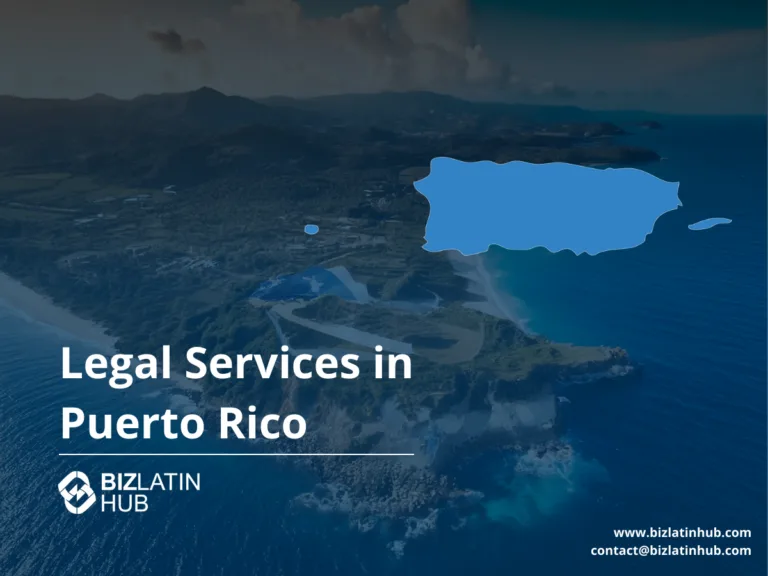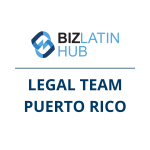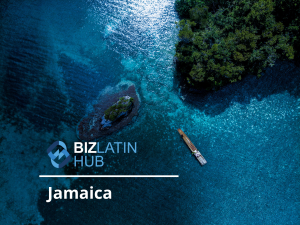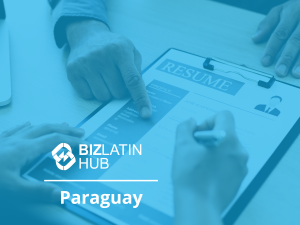Puerto Rico offers a unique blend of business opportunity and tropical charm. As a U.S. territory, it draws many businesses aiming to expand in the Caribbean.
Understanding the entry requirements is vital for successful business travel. This includes knowing the types of visas, eligibility requirements, and necessary documentation.
This article provides a comprehensive guide to navigating business travel to Puerto Rico in 2025, ensuring you have all the essential information for a smooth trip.
How to Travel Travel to Puerto Rico and Visa requirements
Traveling to Puerto Rico for business is straightforward for U.S. citizens, requiring only a valid U.S. passport. However, foreign nationals typically need a visa. The Puerto Rico B1/B2 Visa caters to travelers with dual intentions: business and tourism. This document allows entry for meetings or leisure.
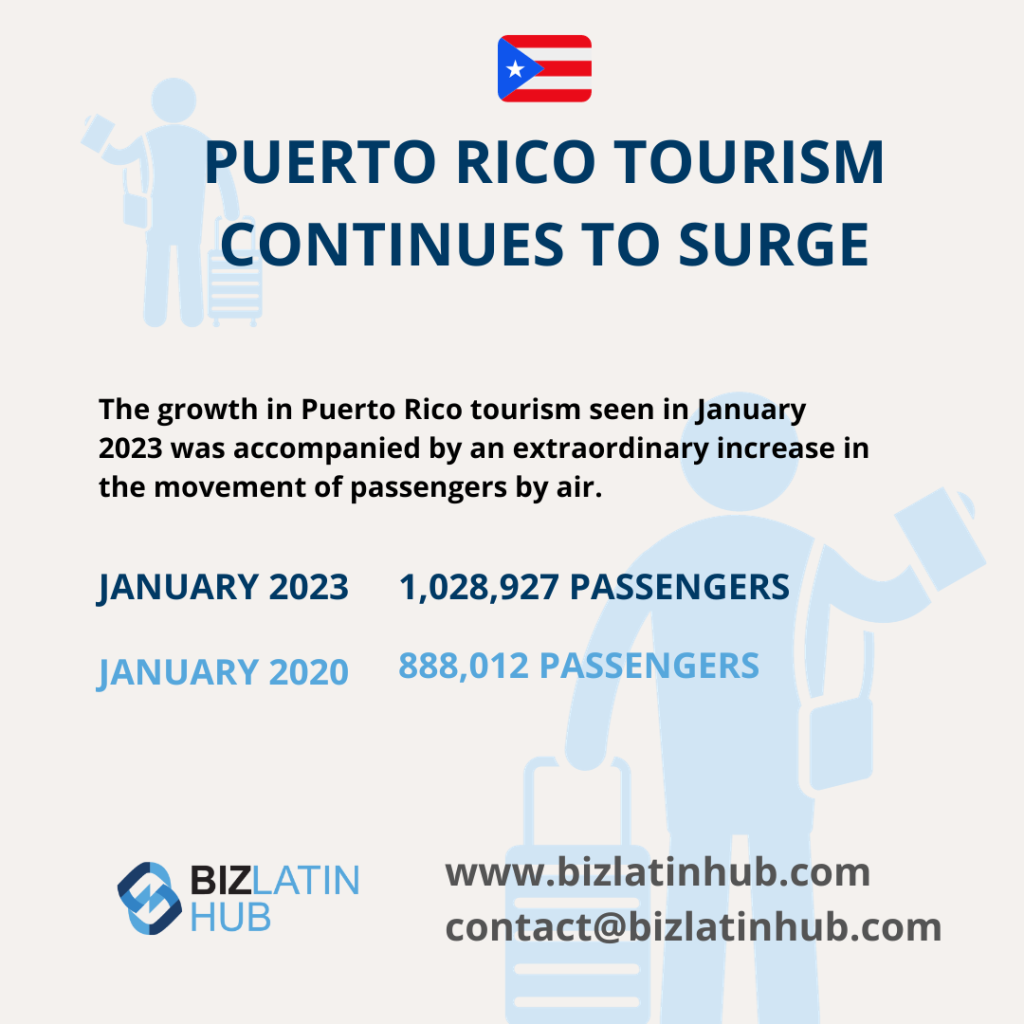
Foreign citizens from over 140 countries must apply for this visa. Candidates need to fill out the DS-160 form and attend an interview at their nearest U.S. embassy or consulate. Required documents include a valid passport and additional papers supporting the visit’s purpose. Applicants should also prepare to pay a fee.
To recap, the key steps are:
- Complete the DS-160 form.
- Attend an interview.
- Provide a valid passport and other documents.
- Pay the visa fee.
These steps support the U.S. government’s efforts to boost Puerto Rico’s economy through foreign investment and business immigration. By following these guidelines, travelers can ensure a smooth visa application process.
Types of Visas for Business Travelers
Business travelers to Puerto Rico have several visa options. The Puerto Rico B1/B2 Visa is the most common choice. This visa combines business and tourism purposes. It is ideal for those attending meetings or exploring Puerto Rico for leisure. The visa allows multiple entries over ten years. Over 140 countries require citizens to apply for it.
Puerto Rico B1/B2 Visa Explained
The Puerto Rico B1/B2 Visa serves those with dual travel objectives. The B1 category covers business activities. Travelers can attend meetings, conventions, or events. The B2 category suits tourists and those seeking medical care. Applicants must apply through a U.S. embassy or consulate. This visa provides flexibility for frequent travelers.
Other Relevant Visa Options
Puerto Rico offers other visa options based on specific needs. The L-1A visa suits managers or executives transferring roles. The L-1B visa fits those with specialized company knowledge. For specialty occupations, the H-1B temporary visa is available. The EB-2 visa serves those with extraordinary skills in arts, sciences, or business. An EB-5 visa is for investors who commit $1 million in Puerto Rico.
Eligibility Requirements for Visas
Travelers to Puerto Rico must meet specific eligibility criteria for a visa. Here is a brief guide:
- Valid Passport: Ensure your passport is valid for at least six months beyond your stay.
- Travel Arrangements: Provide proof of your travel plans, such as flight tickets.
- Financial Support: Show that you have financial means to support your stay.
- Visa Types:
- B-1 (Business): For business visits.
- B-2 (Tourism): For tourism or leisure stays.
- Eligibility: Citizens from over 140 countries require a non-immigrant visa for Puerto Rico.
- Stay Limitations: The B1/B2 Visa allows temporary stays up to 180 days per entry but does not permit employment or study.
Remember, meeting all requirements is essential for a successful visa application. Always double-check documents before submission.
Essential Documentation for Visa Application
Travelers aiming to visit Puerto Rico must prepare essential documents for their visa applications. These documents ensure that travelers meet the necessary requirements.
Passport Requirements
Applicants must have a valid passport to secure a Puerto Rico visa. The passport must be valid for at least six months beyond the planned stay. U.S. citizens traveling to Puerto Rico need both a visa and a U.S. passport. Send your actual passport securely since a physical copy is necessary for visa stamping. Use a guaranteed postal service or courier to keep your passport safe during transit. If your passport is expired or near expiration, renew it before returning to the United States.
Financial Documentation
Providing financial documentation is crucial for a visa application. Applicants must show their ability to support themselves financially during their stay. This can include recent bank statements and proof of employment. Detailed records of assets and employment can strengthen the application. Be aware that a reciprocity fee may be required on the day of the interview. This fee can add to the cost of processing your financial documentation.
Invitation Letters from Puerto Rican Companies
For business travelers, an invitation letter from a Puerto Rican company is key. The letter should clearly state the reason for the visit and detail the relationship with the host company. This supports the visa application for business purposes, such as attending meetings or conventions. Companies may also draft invitation letters for medical visit purposes, showing their versatility. A well-crafted letter increases the credibility and potential success of the visa application.
Applying for a Visa: Step-by-Step Process
Applying for a visa involves several important steps. First, gather all necessary documents. These include a valid passport, a completed visa application form, proof of travel arrangements, and accommodation details. You will also need evidence of financial means and travel insurance coverage. Assemble these documents carefully before starting your application.
Next, accurately complete the visa application form. Make sure to fill out all fields. If a section does not apply, write “None” or “N/A.” Save your progress before submitting the form. Submit your application and documents to the appropriate consulate or embassy. Follow any specific submission procedures they provide.
After submitting your application, pay the visa application fee. The fee amount varies depending on the visa type and your nationality. Keep the payment receipt safe, as you will need it for your in-person interview. During the interview, bring all necessary documents, including your passport, application confirmation page, a passport-style photo, and your travel itinerary.
Scheduling an Appointment
To schedule a visa interview, use the system provided by the US Consulate. You will receive a code via email and SMS needed to continue booking your appointment. Once scheduled, the appointment confirmation email will hold your time slot for 15 minutes. Confirm quickly to secure it.
If you need to cancel or change your appointment, use the link in your confirmation email. The system allows rescheduling only up to 48 hours before your original appointment and only one rescheduling is permitted. Check your email’s junk or spam folder if the confirmation code is not in your inbox. This ensures a smooth appointment process.
Completing the Visa Application Form
Complete the visa application form on your computer, ensuring it is filled out accurately and thoroughly. Avoid handwritten entries or digital signatures. If certain sections are not relevant, mark them as “None” or “N/A.”
After filling out the form, save it without clicking “Continue.” Provide both the application number and passport number to the appropriate authorities for review. At submission, present a printed copy of the confirmation page, your passport, and the visa fee payment receipt. Print the confirmation page as it is required for both payment and the interview.
Paying the Visa Fee
The visa fee is US$185 for non-immigrant visas. This non-refundable fee can be paid through third-party websites like Official US Visa Information and Appointment Services or UsTravelDocs. Check specific embassy protocols for payment instructions.
In some cases, an extra reciprocity fee applies on the interview day after paying the initial fee. Proof of payment is necessary before scheduling your interview. Ensure all forms and documents meet US consular requirements to avoid rejection.
Visa Processing Times
Visa processing times for Puerto Rico vary. They usually range from 2 to over 15 days, depending on the specific consulate. Sometimes, additional administrative processing is needed. This can extend the time up to 60 days after the visa interview.
The US Embassy cannot guarantee the issuance or processing times before the interview. Each case has unique circumstances. Applicants should prepare for possible delays.
If you have a criminal conviction, apply early. Processing times can be longer for these cases. Plan well ahead of your intended travel date.
Processing times can change without notice based on the consulate’s discretion. It is important to stay updated on current information. Below is a simple table highlighting possible timeframes:
| Processing Stage | Timeframe |
|---|---|
| Regular Processing | 2 – 15 days |
| Additional Processing | Up to 60 days |
Keep this information in mind when planning travel. Stay informed and prepared for possible changes.
Visa Exemptions for Certain Travelers
U.S. citizens can visit Puerto Rico without a visa. It is considered a domestic destination. They do not need a passport. An official ID, like a driver’s license, is required.
Citizens from 41 countries can travel to Puerto Rico without a visa for up to 90 days. This is possible through the Visa Waiver Program (VWP). This program includes most European countries and some from Latin America, East Asia, and Oceania.
VWP travelers must have an approved Electronic System for Travel Authorization (ESTA). They also need a valid e-passport for up to six months after their trip.
Exempt Travelers:
- U.S. Citizens: Need official ID
- VWP Countries: Need ESTA, e-passport
- Canadians and Bermudians: Need passport or valid ID
Canadians and Bermudians can enter without a visa. They must have a passport or valid ID.
Ensure all travel documents and authorizations are complete before traveling. This helps avoid entry issues.
How to Extend Your Visa While in Puerto Rico
To extend your stay in Puerto Rico, follow these steps with care. First, apply to the US Citizenship and Immigration Services (USCIS) before your I-94 form expires. Check the CBP stamp on your travel document for your authorized stay period. This stamp is crucial for your extension application.
Requirements for Extension:
- Provide a valid reason for your extension.
- Show your intent to leave the country after your extended stay.
The length of your tourist visa may range from 6 months to 10 years, which could differ from the actual visa expiration date. Make sure your visa application process is complete. This means finishing all steps, including applying for an extension if needed.
Key Points:
- Apply before I-94 expiration.
- Reference CBP stamp.
- Valid reasons required.
- Demonstration of intent to depart is necessary.
Staying longer in Puerto Rico involves careful planning and the right documentation. Always ensure your travel plans align with the legal requirements.
Interview Process for Visa Applicants
During the visa application interview, applicants must bring important documents. Here is a list of required items:
- Valid Passport
- DS-160 Confirmation Page: Must include the ID number.
- Recent Passport-Style Photo
- Visa Fee Payment Receipt
- Appointment Letter Copy
Applicants should also provide their travel plans and supporting documents. These include proof of assets and employment. Depending on nationality and visa type, some may need to pay an additional reciprocity fee.
To help you understand, here is a table of the key steps:
| Interview Requirements | Details |
|---|---|
| Passport | Must be valid |
| DS-160 Confirmation Page | Bring printed copy with ID number |
| Passport-Style Photo | Recent photograph |
| Visa Fee Payment Receipt | Proof of payment |
| Appointment Letter | Bring a copy |
| Travel Plans & Supporting Documents | Include proof of assets and employment |
| Additional Reciprocity Fee (if needed) | Based on nationality and visa type |
Remember, the process is not finished until document submission and the interview are complete. This ensures a smooth experience for all applicants.
Arrival Requirements in Puerto Rico
Travelers to Puerto Rico must be well-prepared with required documents. All US citizens need a US passport and a visa for business or tourism. Most foreign nationals must secure a visa before traveling. This involves a visa application and an interview at a US consulate.
Applicants must appear in person for the interview. They also need a fingerprint scan. The J-1 visa is for students and professors. It allows them to work and study in Puerto Rico for up to four months. A sponsor company and SEVIS registration are required.
After approval, travelers receive their visa via email. They should keep both electronic and printed copies. This is important for presenting upon arrival in Puerto Rico.
Customs and Immigration Procedures
Proper documentation is crucial when entering Puerto Rico. All US citizens need both a visa and a US passport, regardless of the visit’s purpose. This requirement applies to business and tourism alike.
Foreign nationals also need a visa. Proper documentation is key to avoiding travel issues. A passport certifies identity and citizenship. It is essential for re-entry to one’s home country.
Traveling abroad involves risks. Visa stamping and reentry are not guaranteed. New visas may not always be issued. Re-entry might not be granted at the port of entry.
Travelers should carry valid documents. Proof of funding is important. These documents help with customs and immigration procedures. Compliance with laws for non-immigrant status is essential to ensure a smooth entry and exit from Puerto Rico.
FAQs
What should I do if my visa application is denied?
If your visa application is denied, you cannot return to the United States until you receive a new visa. Apply for a new visa in your home country. The Department of State recommends this approach. Contact the U.S. Embassy or Consulate for next steps if denied. If you have previous convictions, your application may require more processing time. Be prepared for a long stay abroad while waiting for your new visa.
Can I work in Puerto Rico on a visitor visa?
You cannot work in Puerto Rico on a B-2 tourist visa. The J-1 visa allows some work for students and professors for up to four months. You must have a sponsor and be part of the Exchange Visitor Program. To apply, register with the Student and Exchange Visitor Information System (SEVIS) and pay a fee of US$220. Foreigners must follow U.S. immigration laws while visiting Puerto Rico. Keep in mind that Puerto Rico is part of the U.S., so immigration restrictions are the same.
What travel insurance do I need as a business traveler?
Business travelers to Puerto Rico should have valid travel insurance. It provides financial protection for health and travel-related issues. Proof of insurance might be needed during the visa application. Understand your policy’s terms and coverage limits. Compare different insurance options to meet your travel needs and risks.
What should I do if my visa application is denied?
If your visa application is denied, you cannot return to the United States. You must wait until the Department of State issues you a new visa. The Department of State advises applying for a new visa in your home country.
Steps to Follow:
- Contact the U.S. Embassy or Consulate
Reach out immediately for guidance on your next steps. - Consider Previous Convictions
Past convictions may require extra processing, extending wait times. - Prepare for a Long Stay Abroad
Be ready for a lengthy stay while waiting for your visa to be processed.
Important Reminders:
- Follow the Department’s recommendation to apply in your home country.
- Seek advice promptly from official sources.
Patience and proper planning are key during this period. Stay informed and prepared for any additional requirements.
